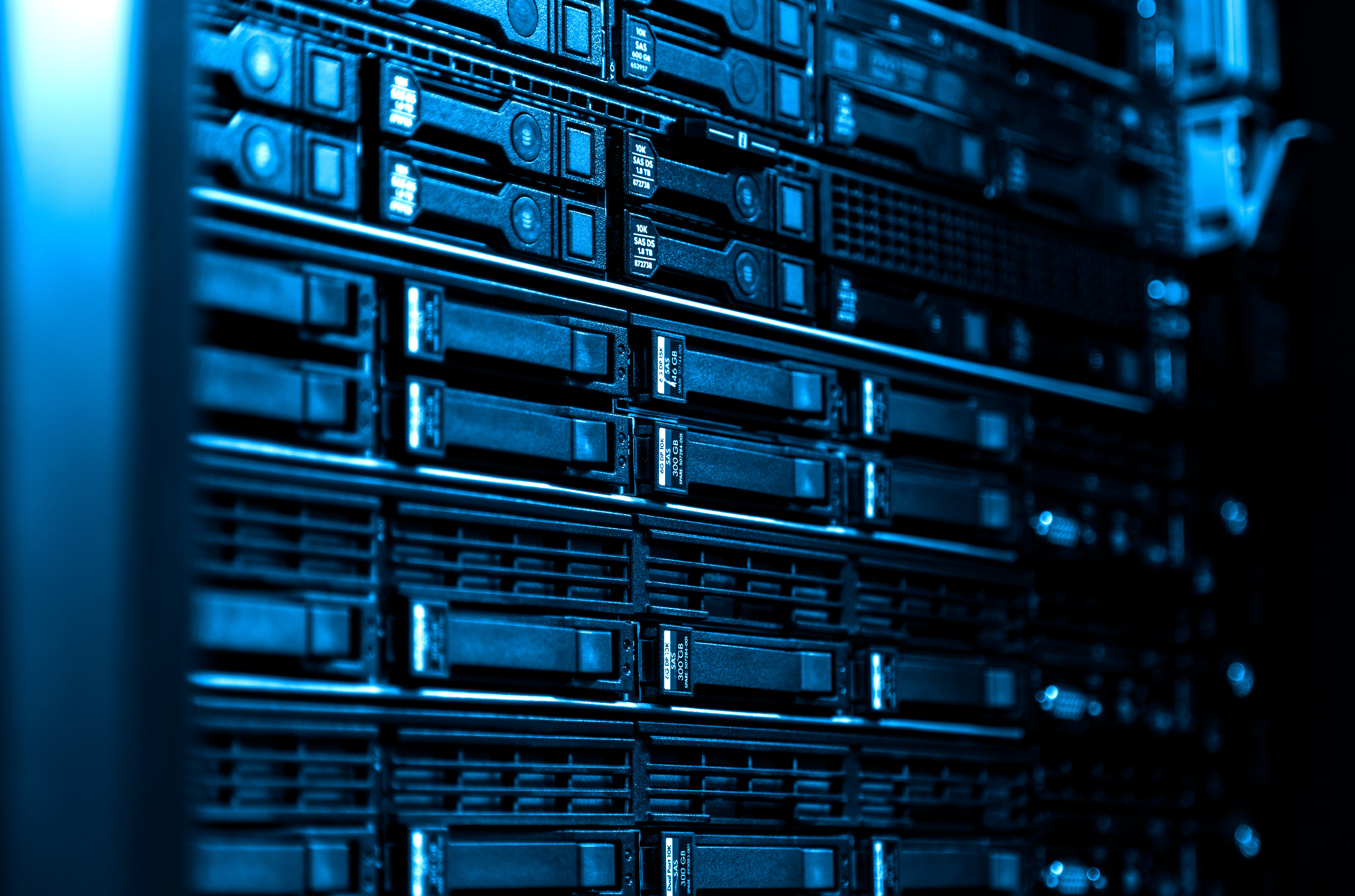Traditional IT CMDB vs. Data Center CMDB: What's the Difference?
When it comes to managing IT and data center assets, organizations often rely on a Configuration Management Database (CMDB).
But not all CMDBs are created equal.
While a traditional IT CMDB helps track hardware, software, and configurations, a Data Center CMDB is specifically designed to manage the physical infrastructure, capacity, and dependencies within a data center.
Understanding the differences between these two types of CMDBs is critical for optimizing operations and ensuring complete visibility.
So, how do these two types of CMDBs differ, and when does an organization need a Data Center CMDB?
In this blog, we’ll explore their key differences, benefits, and how leading data center professionals are integrating them to enable a single source of truth.
What is a Traditional IT CMDB?
A traditional IT CMDB typically stores details about the organization’s hardware, software, systems, facilities, and personnel. Many organizations use a CMDB to streamline IT service delivery and enhance decision-making.
It offers a view of your IT inventory, helping you identify your assets (often referred to as Configuration Items or CIs) and their relationships.
These CMDBs are commonly used for asset management, change management, and ticketing, enabling IT professionals to document moves, adds, and changes. They also support impact analysis and root cause investigation.
While traditional IT CMDBs are beneficial and essential for many organizations, they fall short in meeting the advanced needs of today’s data center professionals.
What is a Data Center CMDB?
A Data Center CMDB is a component within Data Center Infrastructure Management (DCIM) software that builds on and enhances the information in a traditional IT CMDB. It provides a real-time, accurate snapshot of not only the IT equipment in the data center such as servers, networks, and storage, but also the supporting infrastructure including racks, rack PDUs, patch panels, structured cabling, floor PDUs, UPSs, busways, and branch circuits.
This type of CMDB goes beyond asset tracking by offering visibility into the ownership, location, and interconnections of all assets, with relationship mapping down to physical ports and up to virtual machines and applications. It provides a more complete and centralized view of the entire data center environment.
Key Differences Between IT CMDB and Data Center CMDB
A traditional IT CMDB is primarily used by IT teams to manage corporate IT assets as logical objects. It provides a structured database of fields to track configurations, supporting functions like change management, ticketing, impact analysis, root cause analysis, and legal compliance. The main goal of an IT CMDB is to align IT with business objectives by ensuring efficient service delivery and minimizing disruptions.
On the other hand, a Data Center CMDB is designed for data center operations teams and focuses on physical infrastructure and capacity management. Unlike a traditional IT CMDB, it includes rich 3D digital twin visualizations with detailed asset information. It tracks all data center resources, including power, cooling, space, and ports, enabling better asset management, power and environmental monitoring, capacity planning, and connectivity management. The primary goal of a data center CMDB is to optimize availability, efficiency, and utilization of the data center.
What is Typically Tracked in an IT CMDB vs. a Data Center CMDB?
In a traditional IT CMDB, the focus is primarily on asset identification and description, managing all corporate IT assets, and tracking configuration item relationships. These CMDBs are well-suited for documenting hardware and software configurations, such as servers, memory, and disk space, as well as tracking the lifecycle of these assets.
However, when it comes to managing the physical infrastructure of data centers, a Data Center CMDB provides distinct advantages. Unlike traditional IT CMDBs, a Data Center CMDB tracks the detailed physical location of data center assets, including site, cabinet, and U position. It manages all end-to-end physical infrastructure while documenting their physical relationships and connections.
Data Center CMDBs also provide advanced digital twin visualization capabilities, offering 3D floor map views including rack elevations with high-fidelity front and back images, network diagrams with active passive components, single-line diagrams, and world map visualization. They track dimensional, weight, and physical data for assets, as well as utilization and capacity metrics for resources like power, space, and cooling. Additionally, they incorporate real-time power and temperature readings, along with trending and alerting capabilities. The physical connectivity of power supplies and network interface cards is also mapped, including the capacity of all port types.
This robust functionality makes Data Center CMDBs an essential tool for managing the complex physical infrastructure, far surpassing the capabilities of traditional IT CMDBs in this domain.
Why Data Centers Need a Data Center CMDB
While traditional IT CMDBs are useful for tracking hardware, software, and relationships, they fall short when it comes to the unique demands of data center operations. Data centers require a specialized CMDB that provides complete visibility into physical infrastructure, capacity, and dependencies.
The Limitations of Using a Traditional IT CMDB for Data Center Operations
A traditional IT CMDB is designed to manage IT assets as logical objects. However, data center operations involve complex physical resources and relationships such as racks, power distribution systems, cooling systems, and network infrastructure. Traditional IT CMDBs often lack the necessary granularity to track these components, making it difficult to manage capacity, environmental conditions, and physical connectivity.
Without a Data Center CMDB, organizations risk operational blind spots that can lead to inefficiencies and downtime. Key risks include:
- Incomplete information. Gaps in documentation of such as exact cabinet and U position of equipment can cause delays in finding equipment.
- Delayed issue resolution. Without a clear view of physical dependencies, troubleshooting infrastructure issues becomes time-consuming.
- Unreliable capacity planning. Limited insight into space, power, cooling, and data/power port utilization can result in overprovisioning or resource shortages.
The Benefits of a Data Center CMDB
A Data Center CMDB bridges the gap between IT and data center operations by providing:
- Comprehensive asset tracking. Capturing both logical IT relationships and physical infrastructure details.
- Accurate capacity planning. Tracking power, space, cooling, and port utilization in real-time.
- Proactive issue resolution. Mapping dependencies to easily and quickly perform impact analysis and troubleshoot problems.
- Data-driven collaboration. Enabling IT and facilities teams to work from a single source of truth.
By integrating a CMDB, organizations gain better visibility, allowing them to optimize operations, maintain uptime, and improve overall efficiency.
Choosing the Right CMDB for Your Organization
Selecting the right CMDB depends on your organization's needs, infrastructure complexity, and operational priorities. While a traditional IT CMDB may be sufficient in some cases, data centers often require a specialized CMDB to manage their unique physical and capacity-related challenges. In many cases, integrating both provides the most comprehensive view of IT and data center operations.
When a Traditional IT CMDB Is Sufficient
For organizations focused primarily on asset management and change management, a traditional IT CMDB may be enough. It works well when:
- The primary goal is to manage software, applications, and IT service dependencies.
- The organization operates mostly in the cloud.
- Physical infrastructure is minimal, and there is no need for detailed capacity management.
In these cases, a traditional IT CMDB provides visibility into IT relationships without the complexity of managing physical infrastructure.
When a Data Center CMDB Is Necessary
A specialized Data Center CMDB becomes essential when managing physical infrastructure, capacity planning, and operational dependencies. It is necessary when:
- The organization operates its own on-premises data centers or colocation data centers with complex infrastructure.
- Space, power, cooling, and port capacity and utilization must be monitored and optimized.
- Teams need visualization tools for rack elevations, network diagrams, and power diagrams.
- Teams require real-time power and environmental monitoring to maintain uptime and improve efficiency.
Without a Data Center CMDB, organizations risk gaps in visibility that can lead to capacity constraints, inefficiencies, and unplanned outages.
Integrating CMDBs to Enable a Single Source of Truth
For many enterprises, integrating a traditional IT CMDB with a Data Center CMDB delivers optimal results. This approach enables:
- A unified view of both logical IT services and physical infrastructure.
- Seamless collaboration between IT and data center teams.
- More efficient capacity planning, ensuring all teams make data-driven decisions.
By leveraging both systems, organizations bridge the gap between ITSM and data center management, improving efficiency, reliability, and long-term planning.
How to Drive Automation with CMDB Integration
Modern Data Center CMDB providers enable “automation via integration” by offering out-of-the-box CMDB connectors that enable automatic data synchronization across systems. This approach reduces manual data entry and significantly enhances both the accuracy of the data and the presentation of the information.
Your Data Center CMDB should be able work with what you have with open APIs and configurable connectors. This enables bidirectional communication, allowing for automatic creation, updating, and deletion of assets across both platforms.
ServiceNow is a widely used IT CMDB tool that integrates easily with a Data Center CMDB. Leading providers will offer a certified ServiceNow connector available in the ServiceNow store, making integration a quick and straightforward process—typically completed in an hour. The process involves installing the connector, mapping essential fields, and adjusting any filters as needed.
For other popular IT CMDB solutions, such as BMC, Jira, and Ivanti/Cherwell, top-tier Data Center CMDB providers feature a universal CMDB connector that can integrate with nearly any CMDB that offers REST APIs, including custom-built systems.
Real-World Examples of CMDB Integration
eBay Uses APIs to Integrate ServiceNow with dcTrack
eBay integrated ServiceNow and dcTrack to reduce manual effort.
Before integration, eBay was manually entering data in both platforms, which was time-consuming and inefficient. Through a collaborative planning process involving multiple teams, eBay identified key fields for synchronization and mapped out the integration in phases.
Using ServiceNow as their source of truth, eBay developed the integration through APIs. They tested various scenarios, fixed issues, and progressively rolled out the solution across their sites.
With the integration in place, eBay now receives automatic updates on asset changes and daily activities, reducing the need for manual data entry and reconciliation. They have seen significant benefits, particularly in automating routine tasks like asset additions, moves, and retirements.
The World Bank Automates Provisioning from Purchasing to Deployment
The World Bank has integrated DCIM software with ServiceNow and other systems to automate provisioning from purchasing to deployment.
When a purchase order is approved in SAP and the asset arrives, an asset record is created in SAP, which then syncs with ServiceNow to assign key details like make, model, and serial number. The asset is also created in dcTrack with the same information. Provisioning is done via a ServiceNow ticket, which syncs with dcTrack for location and rack unit information.
Once provisioning is complete, the ServiceNow ticket is closed, and that updates SAP as well. Links to dcTrack in ServiceNow tickets provide direct access to rack elevations and asset details, making it easier to manage assets in the data center efficiently, from installation to disposal.
NBCUniversal Plans to Use Sunbird’s Certified ServiceNow Connector
NBCUniversal is planning to use Sunbird’s certified ServiceNow connector to streamline operations and enhance efficiency.
The ServiceNow connector allows bi-directional updates between the CMDB and ticketing systems in ServiceNow and dcTrack. NBCUniversal has already successfully tested the integration for both systems and plans to extend it to Power IQ alerting for automatic ticket creation.
For CMDB integration, ServiceNow will be the system of record, while for ticketing, both ServiceNow and DCIM will be sources of truth, enabling two-way synchronization. To ensure accuracy, NBCUniversal uses a unique serial number key across both systems and has mapped corresponding fields between ServiceNow and dcTrack.
Additionally, they have applied filters to include only relevant records and locations, ensuring that unnecessary data is excluded. NBCUniversal also plans to push linked assets bidirectionally between the systems, enabling visibility into associated CIs and improving operational planning.
Through careful planning and testing, NBCUniversal is setting the stage for significant operational improvements as they roll out the integration.
Bringing It All Together
To reduce the complexity of modern data center management, you need to maximize the value of your data and eliminate swivel chair management.
However, with various teams relying on different systems, it can be difficult to standardize on common tools and data.
Leading data center managers are overcoming this by establishing a single source of truth by integrating a Data Center CMDB with their traditional IT CMDB.
Stay ahead by embracing automation via integration and leveraging modern data center management tools to reduce manual effort and increase data accuracy.
Want to see why leading data center managers are integrating Sunbird DCIM with their IT CMDB? Get your free test drive now.
